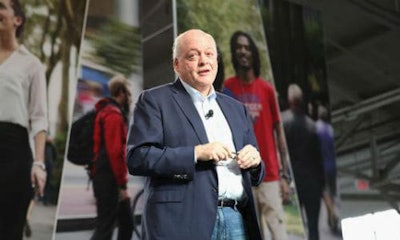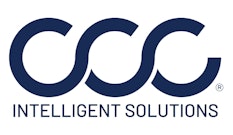
By Jeff Sanford
Toronto, Ontario — October 1, 2017 — In this week’s Autonomous Report, Ford is pressed for a plan, Canada’s tech boom, robotics make their way into dentistry and much, much more!
– Among the many ideas swirling around the autonomous vehicle (AV) sector is this one: The price of daily living will fall as the human element is removed from the economic equation. As more bots do more of the work, a broad deflationary wave of falling prices will settle in and redefine the economy. A perfect example is a recent study from investment bank UBS, which suggests AVs will save households more than $5,000 a year as the cost of transportation plunges. According to a report on CNBC, this will allow the average person to rely on rides accessed through a fleet of vehicles. The idea that everyone will own a single vehicle will give way to a new and different economic structure concerning mobility. “The shift towards electric and autonomous vehicles, combined with intensifying competition, should reduce the fee charged to passengers by as much as 80 percent compared to today. Within the next few years, the technology will be available to make robot axis a reality. In this new paradigm, owning a private car will cost almost twice as much as using robo taxis,” according to the report.
-The Detroit Free Press ran a major story about the future of Ford this week. The story takes a strong stance on the new CEO of the organization, Jim Hackett. A so-called “auto industry outsider,” Hackett was hired to guide the company through an “… uncertain transition into mobility, electrification and self-driving cars,” according to the report. Apparently the new CEO is “… methodically pushing for a new mindset in Ford’s infamously insular culture.” The company this week announced a partnership to develop AVs with San Francisco-based Lyft.
According to the story, “… it’s impossible to ignore that Ford is tailing rival companies like General Motors Co. in partnering with major technology companies.” According to a source quoted in the story, “They’re late to the party here. It strikes me that perhaps with Hackett in charge, they’re knocking down some of the barriers. I think they need to lay out a vision. One of their problems is it’s like a jigsaw puzzle. There’s a piece here, and a piece here, but you can’t see the full vision.”
The Free Press says that Executive Chairman Bill Ford brought in Hackett to be a “change agent.” Hackett has already created a new division called Greenfield Labs. According to the story, “The 40-person think tank, named after Henry Ford’s Greenfield Village, teams Ford engineers with … designers to churn out new ideas that can be applied to autonomous cars, electric vehicles and new forms of transportation.”
– As the new AV-based economy emerges, Canada is becoming a more tech-oriented culture. David Rosenberg is the Chief Economist and Investment Strategist with Toronto-based investment firm Gluskin Sheff and he was Chief North American Economist at Merrill Lynch in New York for years. Since returning to his hometown of Toronto, he has published a closely-followed weekly column in the business section of the Globe and Mail. In his latest missive, Rosenberg talked about a recent panel discussion he took part at the studios of Bloomberg TV in New York. He was there to discuss the Canadian macro outlook in front of a blue-chip crowd of institutional investors, government representatives and central bank officials from both sides of the border. He says he was the only bullish one there.
While other economists worry about the effect the new American protectionism is going to have on the Canadian economy, Rosenberg notes that there are some very important and positive developments taking place in Canada. With the unemployment rate back down to a cyclical low near five percent, “… we are starting to see wage growth pick up to nearly 2 percent after years of near stagnation. Even more interesting is the strong growth occurring in the Canadian tech sector,” writes Rosenberg. He goes on to note that, “… the fastest growing part of the overall economy in fact is technology. Canada is emerging as a major hub in this respect. The GDP share of tech, both hardware and software, is up to 4.5 percent. Both employment and output growth in this space are running over 5 per cent. The unemployment rate here is tied for a record low of barely over 2 per cent, and so it is a good thing that the federal government is fast-tracking high-skilled immigrant labour into the country (with President Donald Trump moving in the opposite direction) … this uber-tight jobs market in the domestic tech sector is a testament to how strong the demand has been. The data we have gleaned show the Kitchener-Cambridge-Waterloo corridor (‘Silicon Valley North’ no longer elicits a chuckle) to be on a major upswing and the area’s jobless rate is the lowest in the province at around 4 percent.”
– A major part of the AV story revolves around advances in artificial intelligence. This past week brought a flurry of stories about new advances in AI and robots. The South China Morning Post reports that a new robot dentist has successfully, “… operated on a human patient without human input and, more importantly, without any harm coming to the patient.” The story goes on to say that, “The Chinese robot dentist was created in response to a shortage of qualified human dentists and the disconcerting number of human-made errors.”
The story also that outside of dentistry, AI and robots have also been used to, “… successfully complete brain surgery and operate inside the human eye.”
– Some other news from the AV world this week: A Silicon Valley-based company called Knightscope announced a new generation of security robot. The company makes robots that can patrol shopping malls. The company just announced that it has added two more robots to its existing lineup. According to a report on CNET, “The K1 is a stationary robot that can scan passers-by for weapons. Using millimeter wave technology, the K1 can sense the size and shape of objects. It’s similar to the body scanning machines the TSA use except you don’t need to walk into an enclosure. The company says it’s suited for use at entry and exit points in airports or hospitals … Then there’s the 770-pound K7 that can traverse rugged terrain like gravel, dirt and sand on its four wheels. Rather than indoor patrols, this buggy-like bot is built for outdoor areas like wind farms or airfields. At the moment its top speed is capped at 3 mph.”





















